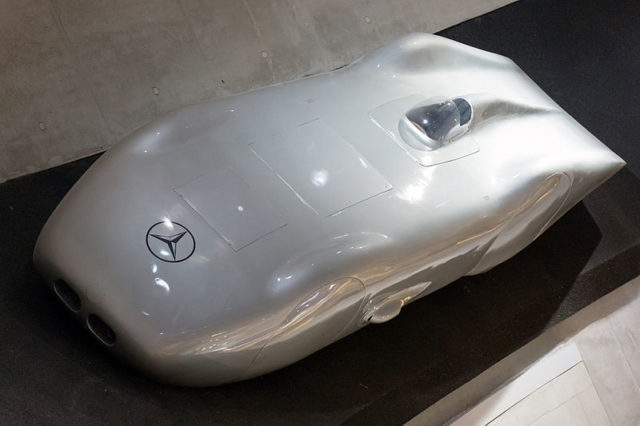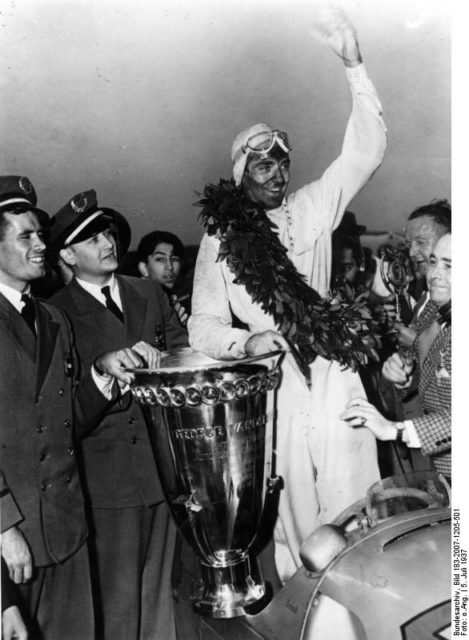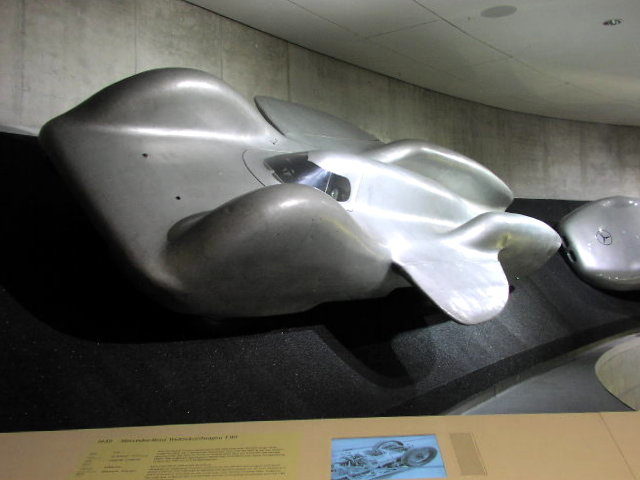The Nazi Regime’s mandate was based on their supposed ability to make Germany into a world power once again. Their entire ethos was devoted to the ideals of German superiority, and Hitler set out to prove that perceived superiority as best he could.
The 1936 Olympics, held in Berlin, were a great success for Nazi Germany; it showcased the nation’s economic recovery, and the German team won more golds than any other. This was a great propaganda victory for the Nazis, but they weren’t finished yet.
Among many other endeavors, the Nazis set out to smash the land-speed record, which they did. When they set the new record they believed it would help them accomplish two goals, it supposedly proved that they, the Nazis were “better”, and it showcased their incredible new Autobahn. The Autobahn system that linked Germany was an object of pride for the racist regime.
Ironically, the Autobahn method of highways that linked Germany was initially rejected by the Nazis. Planned by the former Weimar government, the Nazis declined them, only to embrace the thought of a national road once they got into their power.
They were hypocrites like that. The automotive history is filled with hypocrites creating fascinating cars (Henry Ford and Ferdinand Porsche). Several of those fascinating cars happen to be the low to the ground, sleek streamliners, specifically created to break records. These records still stand to this day. Even with the records, we should always remember that the sleek speed machines were a product of immense evil propaganda, and the drivers were consenting participants.
The Mercedes-Benz W125 Rekordwagen

The Germans had mastery over the Grand Prix racing in the 1930s, with auto creators like Mercedes-Benz, and the Auto Union pushing out the Silver Arrows. The Mercedes-Benz W125 Rekordwagen, was the main car of the Grand Prix racer. It was a successful car, winning six of the 12 races it participated in.
The W125 was highly modified for its record run in the year of 1937, getting rid of the open wheel layout of the track racing, and swapping it out for some sculpted body work. The primary inline eight cylinder engine, for the 736 horsepower V12 that could be placed in the lower section of the car was abandoned.
All adjustments were created for top velocity, from the new housing for the lateral mounted exhaust to the small inlets in the front for the air intake. The radiator, which usually receives air from the outside to assist with the cooling, did not have an air intake.
As an alternative, the car used a chest filled with ice. One thing that was not altered within the car was the driver, Rudolf Caracciola. He had driven the primary W125, so it was not a big change for him.
Most German racing drivers of his time were members of the NSKK. The NSKK was a Nazi organization dedicated to cars. He worked his way up in the world not only because of his superior skill behind the wheel, but as also through a chance meeting with Adolf Hitler.
Hitler ordered a Mercedes Benz 770 in the year of 1931, which was the car you would always see Nazis being transported in. Caracciola, Mercedes’ top-quality driver, was requested to do the delivery, and drive Hitler and his niece around town. Hitler had taken a liking to him as Caracciola’s career progressed, but Caracciola alleged that the fascist nut did not impress him much.
That did not stop him from giving public support for the Nazis later on, but after the war he claimed did not really support the Nazi party. On the date of January 28th, 1938, Caracciola positioned his W125 Rekordwagen on Bundesautobahn 5, and commenced his run. He eventually reached the incredible speed of 268 miles per hour for the flying kilometer. This remains to this day the speed record for a public road.
The Auto Union V16 Streamliner
Ninety minutes after Caracciola set his record, it was the time for his arch-rival to take his shot. Bernd Rosemeyer was a successful racing driver for Auto Union, Mercedes’ rival. After Mercedes set the record with Caracciola and the W125, Autho Union were ready to beat it. They sent out Rosemeyer, their best driver, in their V16 Streamliner. The V16 was based on the Auto Union Form C racing car, a stunning piece of machinery in its own right.

Unfortunately, Rosemeyer lost control of his car when it was hit by a violent gust of wind. It skidded off the highway, went airborne and then collided with a bridge embankment. Rosemeyer was thrown from the car and died at the roadside.
The Mercedes-Benz T80

In 1940, another great Grand Prix driver, Hans Stuck, decided to take a shot at the record. World War II was raging at this point in time, so if a car was going to be built, it would take personal connections to overcome the limitations that the war imposed; materials like rubber or metal were rationed, as well as fuel. Hans Stuck was exactly that man. A personal acquaintance of Hitler’s, they had their first encounter in the year of 1925 on a hunting trip.
Stuck asked Ferdinand Porsche to model a six-wheeled car for his attempt, the Mercedes Benz T80. The T80 originally only designed to reach speeds of around 340mph, but in 1939 the British driver John Cobb set a stunning record of 369mph and this pushed the T80’s target speed to around 450mph.
The T80’s Daimler DB 603 was the same that powered the Messerschmitt Me 410 bomber. It was a 44.5 liter V12, fueled by a combination of avgas, alcohol, and ether. The car was over 27 ft long, and of the six wheels, four of which were driven, and had twin tails that were designed to stabilize it.
Unfortunately for Stuck, however, his connections and influence could only get him so far. shortly before his attempt at the record, the car’s engine was confiscated to be used in a bomber for the war. The rest of the car survived, and now is in the Mercedes Benz museum located in Stuttgart.
